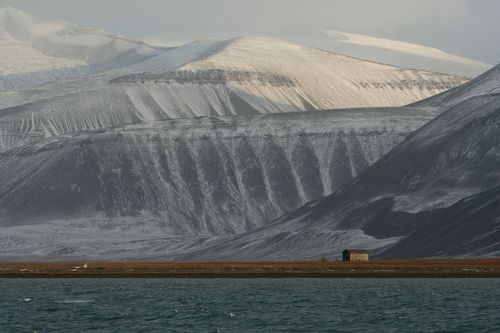|
|
Svalbard and Jan Mayen are no aliens for the ones who have gone through Philip Pullman’s His Dark Materials Trilogy. However, to the uninitiated, let it suffice at the beginning that these two are Norwegian territories on the Arctic Ocean; it’s because of the administrative purposes that they are considered as one. Among the two, Svalbard is a part of the Kingdom of Norway and is situated at the north of mainland Europe, consisting of a group of islands and forming the northernmost part of the Norse Kingdom. Jan Mayen Island, on the other hand, is a part of the same Kingdom and is an Arctic island of volcanic origin, covered by glaciers on certain areas. Jan Mayen is bifurcated by a narrow isthmus and is mountainous by origin.
Geography
Svalbard and Jan Mayen collectively form an archipelago on the Arctic Ocean; the ranges are from 74° to 81° north and 10° to 34° east. Situated at the extreme north of Norway, the archipelago comprises of three large islands, namely: Spitsbergen, Nordaustlandet and Edgeøya. The smaller Barentsøya (Barents Island) and a few other, doesn’t generate much of a public interest.
 Coles Bay on Spitzbergen
Coles Bay on Spitzbergen
|
Climate
Svalbard primarily consists of glaciers and snow-covered areas, though the North Atlantic Current neutralises the Arctic climate up to quite a bit. This prevents the surrounding body of water from reaching the freezing point. The sun never sets in the region during the months of April to August and the reverse occurs from October till February.
History
Svalbard, as claimed by both history and Norse folklore, was discovered by the Vikings in the 12th century AD, the name being an appropriate translation of the words ‘cold edge’. Modern world came to know about the island through Dutchman Willem Barents in the year 1596. The newly discovered islands had thereafter become the centre for whale-hunting for the rest of Europe.
Jan Mayen was discovered by Henry Hudson in 1607, from which it got the name of Hudson's Tutches or Touches. 1611 saw the whalers from Hull naming it the Trinity Island, while in 1612 Jean Vrolicq, a French whaler, named it Île de Richelieu and Isabella was the name Capt. John Clarke gave to the island in 1614. The name Jan Meys Hoel was the one that finally stayed with some modifications; credits go to Joris Carolus who named it after one of the captains of his ships.
 Isfjord on Spitzbergen
Isfjord on Spitzbergen
|
Economy
The economy of Svalbard centres around coal mining; fishing and trapping, though exercised in large scales is slowly giving way to tourism, research, higher education and tech-savvy operations, of which, the satellite relay-stations of The Svalbard Undersea Cable System require a special mention. 60% of the employments are provided by the Norwegian state-owned coal company, besides running the local services and providing most of the local infrastructure.
Politics
The Svalbard Treaty of February 9, 1920, brought the territories under the attention of international diplomacy and was granted the Norwegian sovereignty. The regions are free from any sort of military activity. Because of a freehand given by the Norwegian government, other countries legally exploit the mineral deposits and other natural resources, making Barentsburg and Pyramiden the permanent Russian settlements, until 2000. The territory is governed by the Fylkesmann i.e. the Norwegian governor, from the town of Longyearbyen.
The Jan Mayen Island is completely devoid of any natural resources, making services for Norway's radio and meteorological stations the only source of income. Commercial whaling was popular between 1633 and 1640.
|
|

